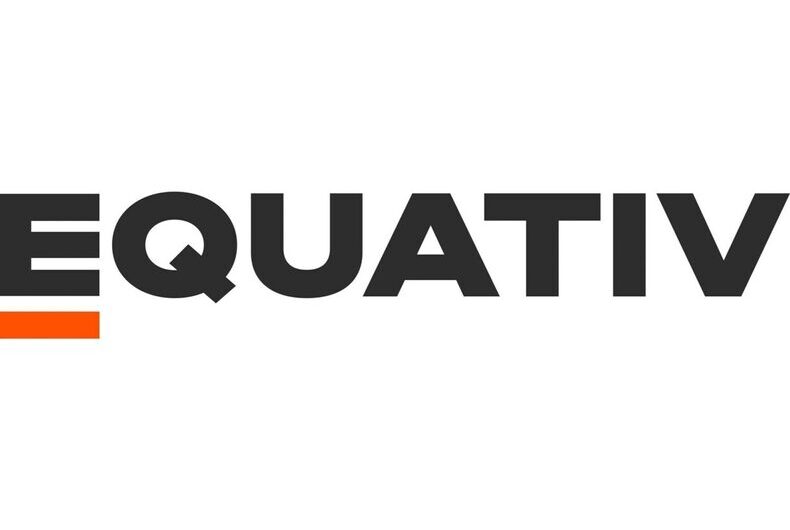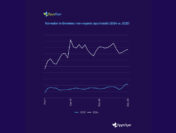
The Middle East has been a major player in the global gaming business in recent years, thanks to a special combination of characteristics that have made the area stand out. With a projected total market value of $184.4 billion in 2022¹, gaming is expected to maintain its position as the second-largest media sector, behind television, according to a report by the Boston Consulting Group (BCG). The Middle East is not only experiencing a larger portion of this global phenomenon—it is expected to surpass $210 billion in the next three years¹—but it is also actively influencing its destiny.
The Middle East: A Hub for Gaming Enthusiasts
The Middle East boasts the highest gaming penetration globally, with over 60% of the population identifying as game enthusiasts¹. This fervor is reflected in the region’s dominance in mobile app downloads, where gaming apps claim a 50% share¹, surpassing the global average of 40%¹. Recent strategic moves by key players in the region underscore the long-term commitment to the sector.
The gaming audience is experiencing rapid growth, particularly in the UAE, where 77% of the population are gamers, with 67% falling within the 25 to 44 age bracket². In Saudi Arabia, 54% of the population engage in gaming, with 64% of the audience aged between 25 and 44². Notably, women constitute 42% of Saudi gamers². Further analysis reveals that the top three interests of this gaming audience include financial products, art and culture, and night outs². The demographics and behaviors of gamers present intriguing opportunities from an advertising perspective.
Gaming and E-sports: A Key Pillar of Economic Growth
These unprecedented government investments not only showcase a commitment to entertainment but also position gaming and esports as key drivers of economic growth. Saudi Arabia’s National Gaming and Esports Strategy, in addition to creating jobs and developing games, aims to contribute significantly to the country’s economic diversification.
In the UAE, AD Gaming and DMCC Gaming Center are designed not only to attract global businesses but also to nurture local talent, creating a robust ecosystem for the industry to thrive. With a focus on job creation, talent development, and global competitiveness, the Middle East is transforming into a hub for gaming innovation and investment.
Streaming Growth: The Middle East Takes the Lead
While China remains the largest market for streaming, the Middle East and Northern Africa are poised to grow three times faster, reaching approximately 200 million people by 2025¹. This growth, with a projected 24.5% CAGR¹, positions the region as a leader in game streaming. The strategic geographical location of the Middle East, acting as a crossroads between East and West, provides gaming companies with a unique advantage in serving diverse global audiences seamlessly.
Factors Fueling Gaming Growth in the Middle East
Several factors contribute to the gaming boom in the Middle East. Firstly, the region’s youthful and digital-savvy population, particularly in Saudi Arabia, where 70% of the population is below the age of 30¹, creates a fertile ground for gaming adoption. Additionally, higher average disposable income and the propensity to spend more time indoors due to hot weather make gaming a natural choice for entertainment and recreation.
Saudi Arabia has unveiled a comprehensive gaming and esports strategy, aiming to create 40,000 jobs and develop 30 games by 2030. The government’s commitment is further highlighted by a substantial investment of $38 billion from the Public Investment Fund (PIF) into Savvy Games Group. This strategic allocation, with multiple acquisitions already executed, signals a robust commitment to fostering a thriving gaming ecosystem.
The United Arab Emirates (UAE) has also joined the gaming revolution, establishing two gaming centers to attract global companies. Abu Dhabi Gaming, in particular, has created a dedicated gaming and esports hub, offering strong incentives to further bolster the industry.
Tourism further amplifies the gaming opportunity, especially in the UAE, a renowned tourism hotspot. As both the UAE and Saudi Arabia actively promote tourism, integrating gaming and esports experiences offers a unique selling point to attract visitors worldwide.
Convergence of Platforms and Business Models
The gaming landscape in the Middle East reflects global trends, with a convergence of platforms and business models. Mobile gaming, constituting over 50% of total gaming revenues¹, has outpaced other platforms, driven by the ease of entry and the free-to-play model. Notably, the rise of casual games has spurred innovation in the monetization of mobile games, primarily through advertising.
The convergence of platforms is evident as popular PC and console titles, including League of Legends, Call of Duty, and Fortnite, make successful transitions to mobile. This trend not only expands the reach of these games but also underscores the increasing capabilities of mobile devices to deliver high-quality gaming experiences.
Advertising in the Gaming Realm: Insights and Strategies
As the gaming industry thrives globally, advertising within this realm becomes increasingly significant. Insights from the In-Game Advertising 2023 Report by Insider Intelligence shed light on gamer preferences and effective advertising strategies.
Gamers prefer ads that seamlessly integrate with the gaming experience, avoiding interruptions to the flow of gameplay. Relevant and realistic ads, particularly those in sync with the game’s content, are more impactful and likely to be positively received by gamers.
While hardcore gamers resist traditional interstitials or banners, intrinsic ads in the background that enhance realism are better received. Product placements within games are particularly effective, with 55% of gamers acknowledging that they make the gaming experience “more real”³.
Rewarded ads, offering in-game currency or unlocking new levels, remain popular among gamers, with 74% expressing their acceptance of these ads³. This positive reception underscores the importance of non-disruptive and contextually relevant in-game advertising strategies.
The Role of Context and Brand Perception in Gaming Advertising
A report by IAB US emphasizes the influence of context on brand perception and purchase intent among gamers. Notably, 43% of gamers admit that the content a brand advertises near in a game influences their decision to purchase products or services⁴.
In a landscape where 73% of gamers perceive certain games as promoting risky content⁴, brands can leverage contextually relevant and non-disruptive in-game ads to build positive associations. Sixty-nine percent of gamers express openness to non-disruptive ads⁴, highlighting the importance of aligning advertising strategies with the gaming environment.
“Brands already understood the opportunities within the gaming environment years ago with successful customized campaigns. Today, we are talking about scaling those campaigns and addressing them programmatically to a larger audience. All the market dynamics are showing that gaming is set to become a media channel itself in the coming years in the MENA region.” – Céline Gauthier-Darnis, EVP MENAT & APAC.
Conclusion: A Dynamic Future for Gaming Advertising in the Middle East
In conclusion, the Middle East stands at the forefront of the global gaming revolution, fueled by a combination of youthful demographics, government commitment, and strategic investments. As the region transforms into a gaming and esports hub, advertisers have a unique opportunity to engage a highly enthusiastic and diverse audience.
The convergence of platforms, the growth of mobile gaming, and the increasing acceptance of in-game advertising underscore the dynamic nature of the gaming industry in the Middle East. Advertisers, by aligning with gamer preferences and leveraging context, can not only drive positive brand perception but also tap into a burgeoning market with immense potential.
The Middle East’s commitment to gaming goes beyond entertainment; it represents a strategic pillar for economic diversification, job creation, and global competitiveness. As the region continues to shape the future of gaming, advertisers who understand and embrace this evolving landscape stand to reap the rewards of an industry poised for unprecedented growth and innovation.




